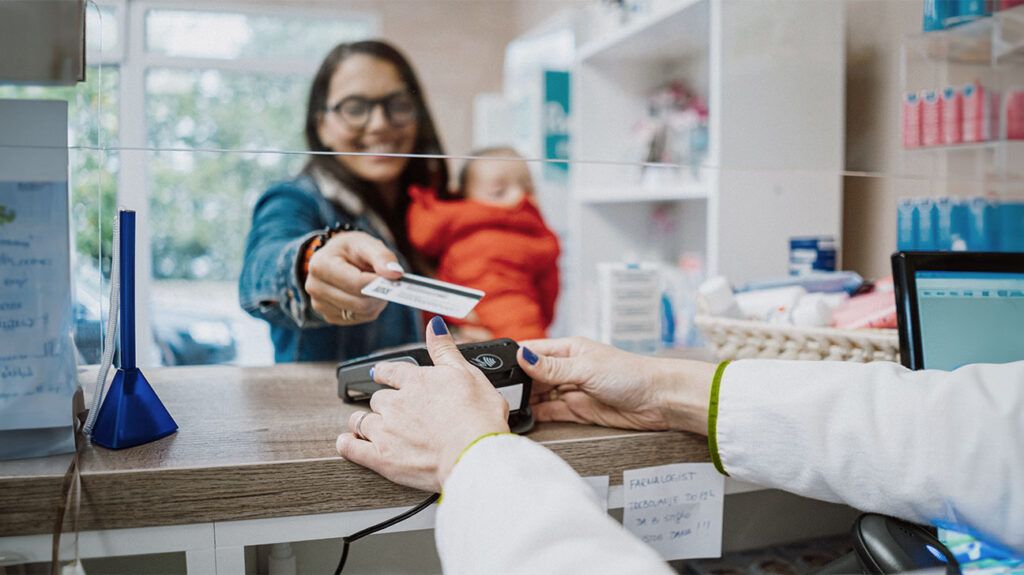Manufacturer copay cards, or copay coupons, are savings programs that medication manufacturers offer to offset the cost of their brand-name medications.
Copay cards may help people with private insurance afford medication they would otherwise have to pay for out of pocket.
To be eligible for a copay card, a person typically must meet specific requirements, which could differ depending on their location. Manufacturers may also limit how often and for what amount someone may use a copay card.
This article looks at what manufacturer copay cards are, how they work, and how a person can get one. It also explores the eligibility criteria for copay cards, restrictions on getting one, and concerns about the savings program.

The out-of-pocket costs of prescription medications have risen over time. Out-of-pocket costs are costs that insurance does not cover.
In recent years, the United States has experienced
Manufacturer copay cards may help offset these costs by offering financial assistance in the form of copayment. The copay card is a coupon that a person can use at a pharmacy to cover
The medication manufacturers provide the copay cards and determine the maximum amount they will cover for each medication individually.
A person may use the cards to help lower the costs of more expensive brand-name drugs but not generic alternatives.
When a person uses a copay card at a pharmacy, the medication manufacturer that has provided the card will cover part or all of the cost of the medication.
A person can
Copay cards may also have maximum savings allowances and restrictions that limit the number of times someone can use them.
People can access copay cards through the medication manufacturer’s websites. They can check their eligibility, inquire about more information, and register.
A pharmacist or healthcare professional may also be able to provide information about manufacturer copay programs.
Copay cards are not available for all prescription medications. Manufacturers will only provide them to people with prescriptions for specific medications.
To determine if a copay card is available for their medication, a person can try:
- asking the healthcare professional who prescribed the medication or a pharmacist
- visiting the manufacturer of the medication’s website and searching for information on copay cards or coupons
- calling the manufacturer of the medication to inquire about financial assistance options
- using tools on websites such as needymeds.org, which has a database that includes information on which manufacturers offer copay cards
The eligibility requirements for a copay card may vary between manufacturers.
Typically, copay cards are
Restrictions
Some restrictions may prohibit a person from getting or using a copay card. These include:
- Having government health insurance: A person cannot get a copay card if they have government health insurance, such as Medicare or Medicaid. This is due to anti-kickback statutes preventing manufacturers from persuading people to buy certain products or services by offering to cover costs when the federal government may reimburse those costs.
- Location-specific restrictions: Some areas may have laws restricting the use of copay cards. For example, California does not allow people to use them to cover the costs of brand-name medications if generic versions are available.
Critics of copay cards argue that the savings programs may drive up health system costs and lead to higher costs over time.
Some
While more research is necessary, some
Research
Do copay cards count toward deductibles?
A person needs to review the terms and conditions of their insurance provider to determine if the copay card payments count toward deductibles.
Some copay card payments may count toward deductibles, while some insurance plans contain features
What is the difference between a copay card and a discount card?
The manufacturer of a medication provides a copay card to offset the out-of-pocket cost of specific medications. A person can use them alongside private insurance.
Third-party companies that negotiate lower rates with participating pharmacies offer discount cards. Discount cards apply to various prescription medications, including generic alternatives, and are not limited to specific manufacturers. A person can use discount cards instead of private insurance.
Why do copay cards exist?
Manufacturers provide copay cards to offset the out-of-pocket costs of some medications they produce.
Aside from providing financial assistance to individuals, copay cards can help manufacturers drive sales of their products,
Medication manufacturers offer copay cards to offset the out-of-pocket expenses of some prescription, brand-name medications. The manufacturers agree to cover part or all of the cost of the medication.
To receive a copay card, a person typically has to meet certain eligibility requirements, such as having private health insurance. Copay cards are unavailable for all brand-name medications and do not apply to generic medications.
Manufacturers usually restrict how often a person can use their copay card and how much they will cover.
